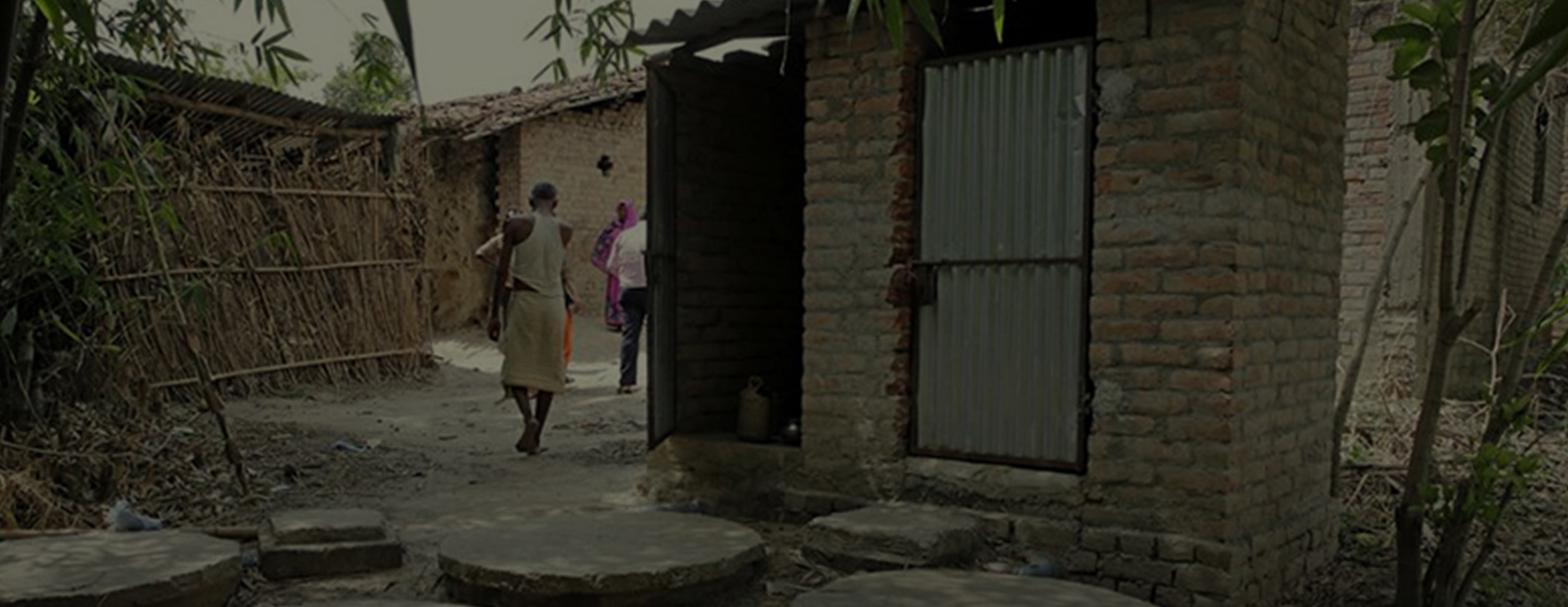Sustainable liquid and solid waste management systems safeguard the health of the community against diseases and infections, improving its physical and mental wellbeing. Since their introduction in 1954, rural sanitation programmes have evolved over the years and the latest iteration, Swachh Bharat Mission-Gramin (SBM-G), has been unprecedented in its focus, mandate and resource allocation towards meeting the goals of sustainable sanitation. Over its five-year run, its objective has expanded from the mere provision of a toilet facility to also include the institution of systems for Solid and Liquid Waste Management (SLWM) and prioritization of Open Defecation Free (ODF) villages for piped water supply schemes. For the former, the Mission has earmarked funds based on the size of the Gram Panchayat (GP), for example, INR 20 lakhs for GPs with 500 households and so forth. The latest Rural Sanitation Strategy, 2019-2029, further emphasizes these goals, along with those of ODF Sustainability.
In its response to the national thrust on access to a toilet facility under SBM-G, the state of Odisha made significant strides in augmenting coverage of individual toilets from 14% in 20112 to a purported universal coverage in 2019.3 The state now intends to establish SLWM systems for downstream management of liquid and solid waste – starting with issuing a state-level policy governing the subject – to leverage its current progress in the elimination of open defecation for sustainable sanitation outcomes. To inform such a policy of the onground situational needs, the Centre for Policy Research undertook a rapid assessment of the prevailing waste management landscape in three districts of the state. This report discusses the resulting findings relating to aspects ranging from community practices to the SLWM infrastructure capabilities existing in these regions.
KEY FINDINGS
Toilets increase, but quality flags
SBM-G rapidly enhanced the number of individual toilet facilities. Still, they lack in quality in many cases, especially among the constructions which involved external actors, such as NGOs, in the construction process.
Single pit, the singular winner
Single pits are the most commonly found on-site sanitation system, followed by twin pits and septic tanks. Functioning on the same principle as a twin pit, these, however, require mechanized emptying to be considered a safe technological option.
Twin pits, but only in name
Missing or inaccessible junction boxes, pits connected in series, and lack of user awareness regarding their maintenance, are holding back the potential of twin pits as the sustainable and affordable option in sanitation technology they have been envisioned as.
Infrastructure first, usage later
The predominance of single pits over twin pits, inadequate dissemination of user information dissemination concerning operation and maintenance (O&M), lack of associated services, viz. in-house water and desludging, and inadequate focus on behaviour change have led to low toilet usage.
Toilet usage, contamination or sanitation?
In a significant number of cases, households concomitantly rely on in-house borewells or handpumps located in the vicinity of toilet facilities. In these cases, factors such as the inherent vulnerability of the aquifer, a high water table, the proliferation of leaching pits, and unregulated setback between pits and wells have the potential to result in contamination of water supplies.
Greywater, but not in the backyard
In the absence of in-house water supply, communities usually perform chores such as bathing and washing at the water source, fetching and storing water at the premises only for drinking and cooking. The production and disposal of untreated greywater, therefore, needs addressing at both the household and settlement level.
Handpumps and borewells, unsanitary sites
In the absence of soak pits alongside handpumps and borewells, both public and private, the water stagnates at the site, creating an unhygienic environment susceptible to vector breeding.
Solid waste, the missing agenda point
Solid waste management is yet to be seen as a significant concern at the GP level. Organic waste is safely and productively managed at the household, while inorganics are dumped and/or burned. Centralized management systems are absent, with even dustbins at marketplaces a rarity.
Less agrarian, more plastic
The nature of the habitation dictates the type and quantity of waste generation, and the avenues available for recycling. The more urban habitations have greater penetration of FMCG products and in turn, generate more plastic waste – which the region is ill-prepared to handle.
Going forward, the state of Odisha should align its efforts for sustaining its ODF status with the key ascertained dimensions of toilet usage, viz. usable toilets accompanied by functional on-site sanitation (OSS) systems, reliable and convenient sources of water for toilet use, easy and affordable access to toilet maintenance services, and behaviour change. The universal access to and usage of a toilet facility is a necessary but not sufficient condition for the creation of clean and sanitized villages, protection of the health of communities, and the abatement and prevention of environmental pollution.
The state should account for variations in village characteristics, e.g. proximity to urban centres, nature of villages – whether more or less agrarian, socioeconomic variations at the settlement (hamlet) level, and also the household-level and community-level behaviours, in determining optimal solutions and strategies since they directly impact SLWM needs.
The full report can be accessed here.


